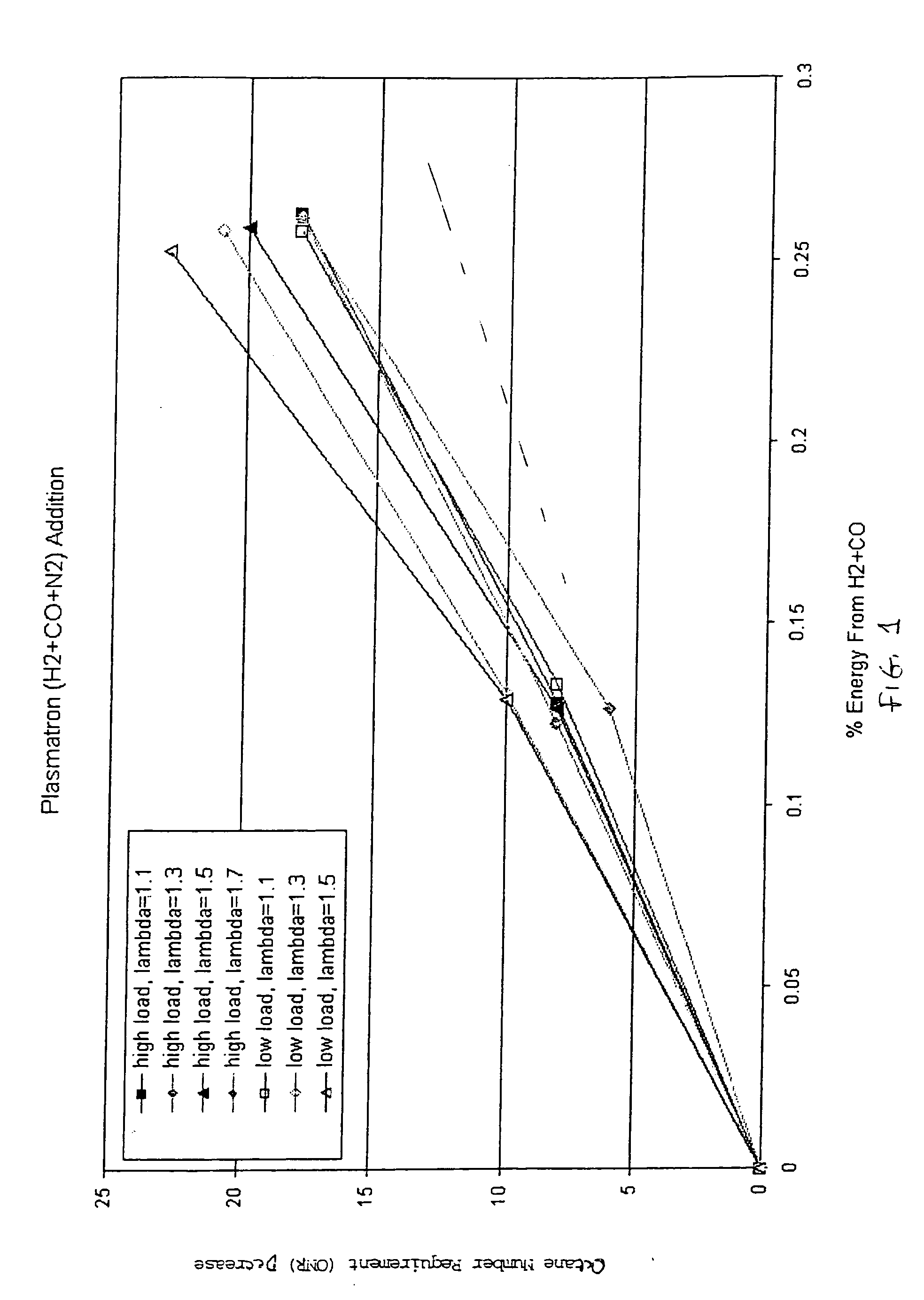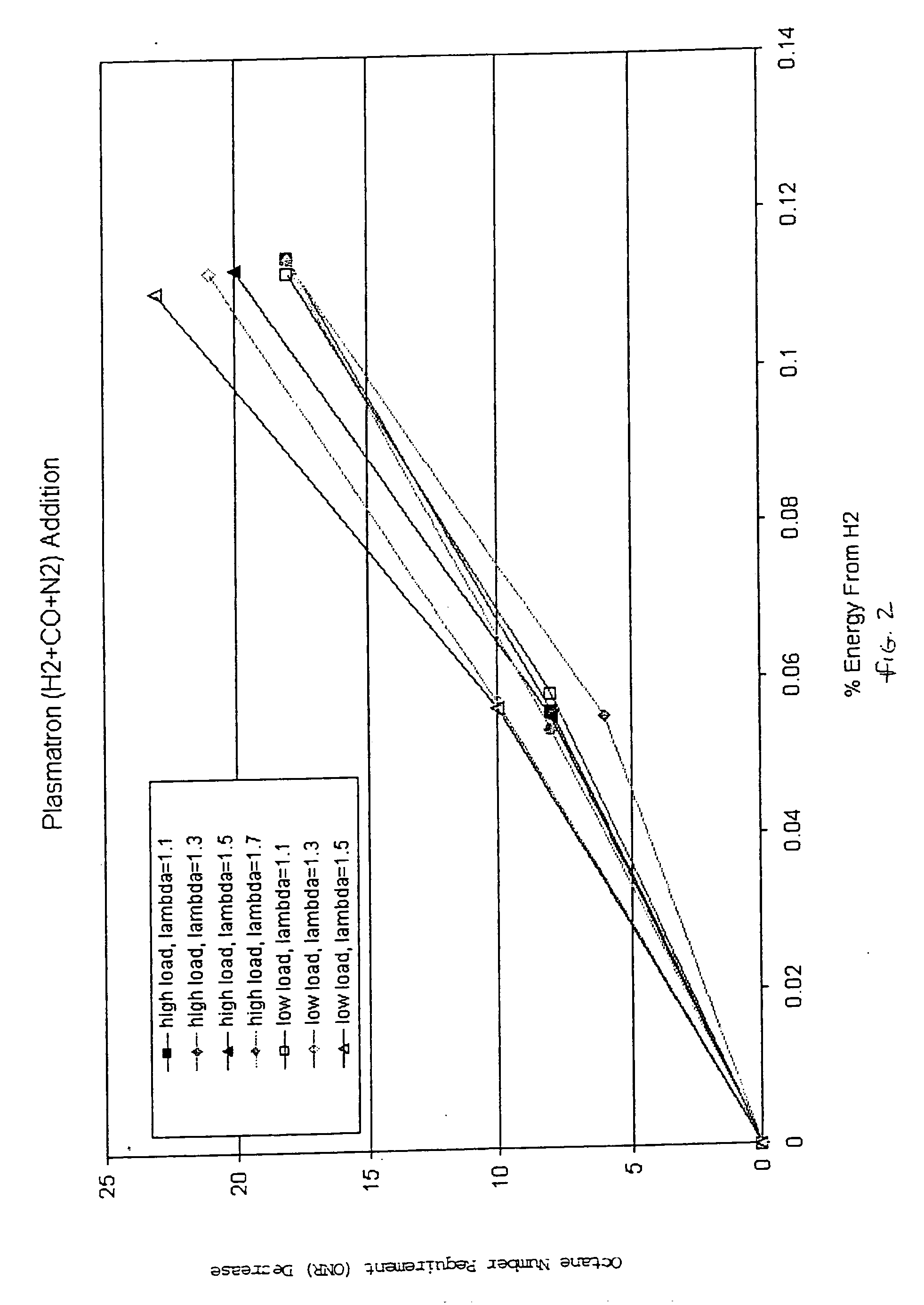Hydrogen and carbon monoxide enhanced knock resistance in spark ignition gasoline engines
a technology of spark ignition and knock resistance, which is applied in the direction of machines/engines, mechanical equipment, electric control, etc., can solve the problems of reducing engine power density (power/cylinder volume), achieving high compression ratio operation without reducing engine power density, etc., and achieves greater spark retardation and knock resistance. , the effect of increasing the resistan
- Summary
- Abstract
- Description
- Claims
- Application Information
AI Technical Summary
Benefits of technology
Problems solved by technology
Method used
Image
Examples
Embodiment Construction
[0016] We have recently carried out experiments at the Massachusetts Institute of Technology to determine the impact of various parameters upon knock in spark ignition gasoline engines. These experiments have shown that the addition of hydrogen has a surprisingly substantial effect on increasing the knock resistance of gasoline. Specifically, the experiments studied the effects of hydrogen and hydrogen-rich gas containing carbon monoxide on octane number requirement. The octane number of a fuel represents its ability to resist knock. The typical difference in octane number between regular and premium grade gasoline is ˜6.
[0017] Experiments to identify the knock trends of mixtures enhanced with hydrogen (H2) and carbon monoxide (CO) were performed on a single cylinder research spark ignition engine with boosting capability. The experimental method used to investigate knock trends consisted of determining the octane number of gasoline supplied to the engine that results in audible kn...
PUM
 Login to View More
Login to View More Abstract
Description
Claims
Application Information
 Login to View More
Login to View More - R&D
- Intellectual Property
- Life Sciences
- Materials
- Tech Scout
- Unparalleled Data Quality
- Higher Quality Content
- 60% Fewer Hallucinations
Browse by: Latest US Patents, China's latest patents, Technical Efficacy Thesaurus, Application Domain, Technology Topic, Popular Technical Reports.
© 2025 PatSnap. All rights reserved.Legal|Privacy policy|Modern Slavery Act Transparency Statement|Sitemap|About US| Contact US: help@patsnap.com



